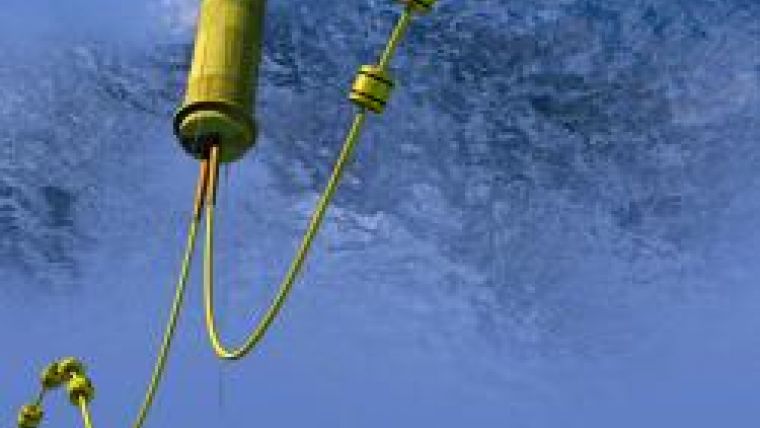Making Wind Farms Float
Offshore sites are seen as the best option for wind farms. Until now offshore wind turbines have had to be firmly rooted on the seabed with large and costly subsea structures. Things are changing, however, with the advent of Statoil's innovative new offshore floating Hywind wind turbine, the first of which is now successfully moored in the North Sea off the Norwegian coast. The Hywind turbine incorporates Trelleborg's syntactic foam (hollow glass microspheres embedded in a binder) buoyancy technology.
Without the support of properly designed buoyancy the structure would be much less able to resist the extremes of the offshore environment, and the cable that anchors the turbine to the seabed could suffer premature damage.
For Hywind, Trelleborg designed and supplied 45 polymer-coated syntactic foam distributed buoyancy modules (DBMs), which supply buoyancy support for a three-ton, 100-metre section of cable as it exits the turbine spar and descends to the seabed 220 metres below the surface. The buoyancy modules include an internal clamp for secure fastening and precise positioning on the cable. The cable is supported mid-water in what is known as a "lazy wave" configuration, featuring gentle, long radius curves that minimise stress on the cable while accommodating natural movement created by wind and waves.
Trelleborg's DBMs were originally developed for deepwater support of umbilicals and risers in the oil and gas industry. For optimum buoyancy under different sea conditions, the precise position of Trelleborg's 45 polymer-coated syntactic foam distributed buoyancy modules (DBMs) on the cable from the Statoil's Hywind floating wind turbine is precalculated.
The positions must be maintained, despite stresses during launch and in operation. The clamp is crucial; the design, material selection and manufacturing technique are critical in ensuring that the finished clamp maintains the buoyancy module position during cable contraction and expansion over the 20-year lifetime of the project.
"Trelleborg has substantial expertise in operating in deepwater marine and subsea environments, and a track record acknowledged by leading offshore engineering companies around the world," says Trelleborg's Gary Howland. "The company has significant experience in the supply of DBMs, with more than 35,000 modules in service. This experience will be invaluable in the rapid establishment of the far-offshore renewables industry."














